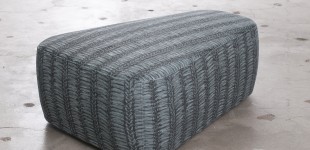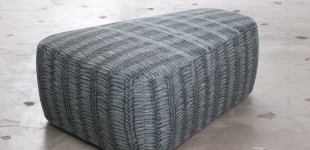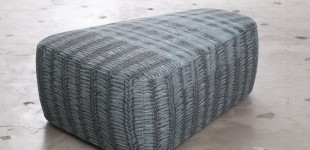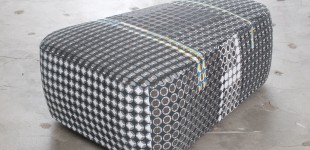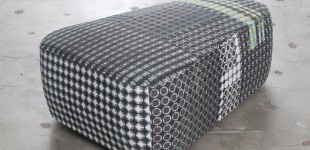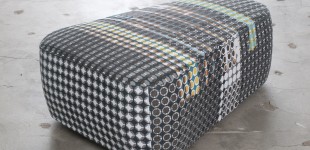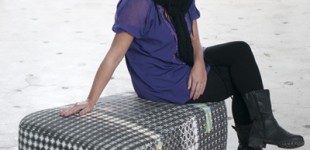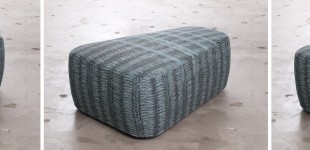Smart Textiles Design Lab Blog at The Swedish School of Textiles
Recurring Patterns

What if your furniture expresses appreciation when you sit on them? Or what if they call for attention if they have been empty for too long?
Textiles always change expression over time due to use and exposure to sunlight, moist, etc. The textile on these pouffes changes expressions in a dynamic interplay with their use. A bright pattern is gradually revealed when someone sits on them but hid again when they stand idle by. In other words, their patterns are recurring in both space and time.
This is only one possible expression of what we can be done with this technology, however. These layered programmable patterns make it possible to let the pattern fade, dissolve, change color or disappear completely and do so as a recurring event. The changes can depend upon events happening far from or in near relation to the textile, or they can happen in a recurring temporal pattern.
With these two pouffes we demonstrate some of the possibilities with this technology. In one print an enlarged knitted structure partly dissolves and the color changes from gray to light blue in a recurring pattern. The point here was to demonstrate what the lack of structure could do to an otherwise structured pattern. In the other print, a collection of geometric patterns changes color drastically from shades of gray to bright yellow and blue. The point here was to demonstrate the power of the color contrast.
These prototypes are part of a larger project in the Smart Textile Design Lab at the Swedish School of Textile where we explore how to use programmable textile expressions in furniture design. What does it entail to design with expressions that change in context over time? What can these recurring patterns do to the use of furniture? What new kinds of furniture can we imagine?
Technical details
Each of the two demonstrated ‘fabrics’ comprises four parts: woven cotton with embedded conductive threads, a layered pattern printed with a combination of pigment color and thermo chromic ink (with a state change at 27C), pressure sensors to detect when someone sits on the fabric, a computer programmed to control which threads heats up and for how long depending which pressure sensors are activated. When the threads heat up the pattern changes.
Collaboration
The project is a collaboration between the furniture company IRE, Smart Textile Design Lab at the Swedish School of Textile, University of Borås and Smart Textiles innovationsytem.
Exhibitions
Stockholm Furniture Fair, February 8-12 2011
Salon Internazionale del Mobile, April 12-17 2011
Researchers
Linnéa Nilsson (contact: linnea.nilsson at hb.se)
Mika Satomi
Anna Vallgårda
Linda Worbin
More pictures
